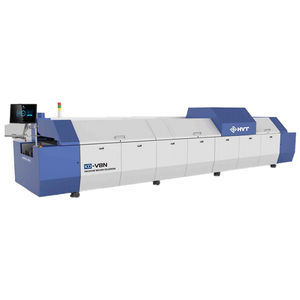
- Industrial machines and equipment
- Welding and Assembly
- Reflow soldering machine
- Chengliankaida Technology.co.,LTD

- Products
- Catalogs
- News & Trends
- Exhibitions
Reflow soldering oven KD-V10Nvacuumfor electronic componentsfor PCB
Add to favorites
Compare this product
Characteristics
- Technique
- reflow
- Operating mode
- vacuum
- Applications
- for PCB, for electronic components
- Other characteristics
- 10-zone
- Power
60,000 W
Description
Interested in vacuum reflow oven, hot air nitrogen reflow oven with 10 zones, IGBT modules solder paste reflow ovens, or automotive led vacuum nitrogen reflow ovens, Our vacuum reflow soldering systems are fully customizable.
Main function of Vacuum Reflow Oven
• In electronics manufacturing, reflow soldering involves attaching surface-mounted components to a printed circuit board (PCB) with solder paste. The components are placed on the PCB after solder paste is applied. As the PCB is heated, the solder melts and flows, creating a bond between the components and the PCB.
• Reflow soldering involves several steps. First, solder paste is applied to the PCB using a stencil or dispensing tool. The components are then placed on top of the paste using automated equipment or by hand. In a reflow oven, the PCB is heated until the solder paste melts and flows, creating a bond between the components and the PCB.
• Compared to other soldering methods, reflow soldering has many advantages. Using this highly automated process, human error is reduced and production efficiency is maximized. Additionally, it ensures that the components and PCB are bonded tightly, ensuring long-term reliability.
• The reflow soldering process is widely used in the electronics industry and is an integral part of modern electronics manufacturing.
• led reflow oven
Other Chengliankaida Technology.co.,LTD products
Vacuum Soldering system
*Prices are pre-tax. They exclude delivery charges and customs duties and do not include additional charges for installation or activation options. Prices are indicative only and may vary by country, with changes to the cost of raw materials and exchange rates.






